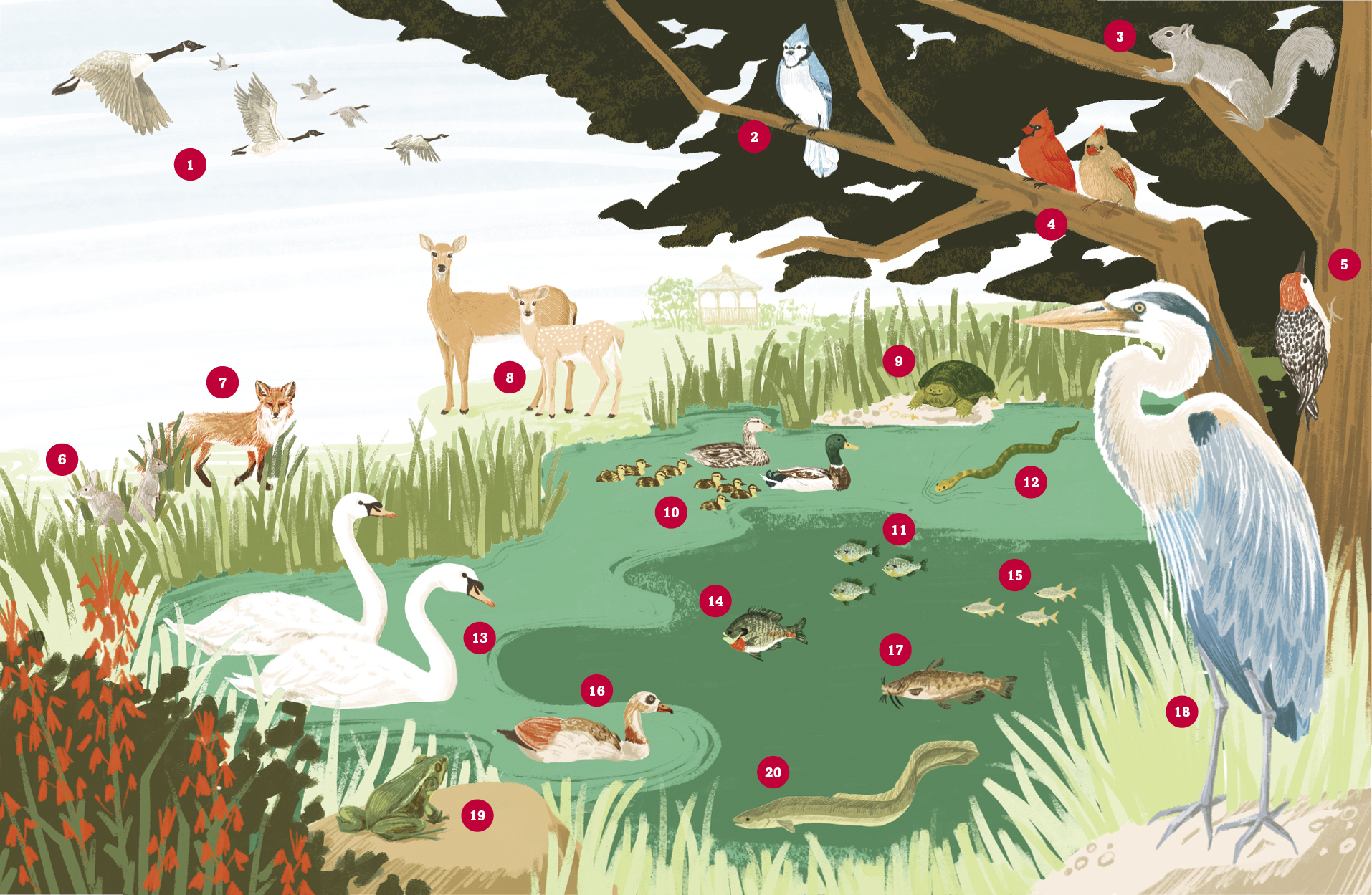More than 100 species roam Rider's 280-acre campus, from the Egyptian goose to the red fox to the blue heron. Timothy Forrest ’18, in collaboration with Dr. Kathy Browne, an associate professor in the Department of Geological, Environmental, & Marine Sciences, Amanda Schopf ’18 and senior geosciences major Jack Sangillo, created a wildlife guide to help appreciate the creatures who call Rider home. This map, which shows off some favorite campus inhabitants, is inspired by their work and informed by their research.
Illustration by Natalie Nguyen
- Flocks of Canada geese (Branta canadensis) fly in V-shaped patterns.
- Blue jays (Cyanocitta cristata) are known to mimic the calls of hawks, thought to be a method of warning other jays in the area.
- Eastern grey squirrels (Sciurus carolinensis) will live about 12 ½ years on average in the wild.
- The northern cardinal (Cardinalis cardinalis) is one of the more recognizable examples of North American songbird species with females that sing.
- Red-bellied woodpeckers (Melanerpes carolinus) can extend their barbed tongues up to 2 inches to catch prey.
- Cottontail rabbits (Lepus sylvaticus) are crepuscular, meaning that they spend their time awake during dusk and dawn.
- Once red foxes (Vulpes vulpes) reach a certain age, their mothers will bring them small prey to play with while they feed, building up their hunting skills.
- White-tailed deer (Odocoileus virginianus) can run 30 miles per hour and jump over 10 feet into the air to avoid predators.
- Snapping turtles (Chelydra serpentina) will hunt and kill other turtles in their territory by decapitating them.
- Newly hatched mallard (Anas platyrhynchos) ducklings are ready to leave the nest within 13 to 16 hours.
- Pumpkinseeds (Lepomis gibbosus) mainly eat snails, worms, insects, mollusks, small fish and bits of vegetation.
- The northern water snake (Nerodia sipedon) is one of the largest and most common snakes in North America.
- Devotion to their lifelong partners has made mute swans (Cygnus olor) a symbol of love in many cultures.
- The bluegill (Lepomis macrochirus) is also commonly referred to as sunfish, bream or copper nose.
- Golden shiners (Notemigonus crysoleucas) can spawn four to five times in a single season.
- The Egyptian goose (Alopochen aegyptiaca) is native to the Nile River Valley, but many self-sustaining populations in the U.S. are derived from birds who escaped private collectors' residences.
- Of the catfish in New Jersey, brown bullheads (Ameiurus nebulosus) are the smallest and most common.
- The neck of the blue heron (Ardea herodias) is specialized to allow them to attack quickly from a long distance.
- The northern green frog (Rana clamitans melanota) is known as the loud mouthed frog.
- Male American eels (Anguilla rostrata) grow 2 feet in length and females grow 3 to 5 feet in length.

